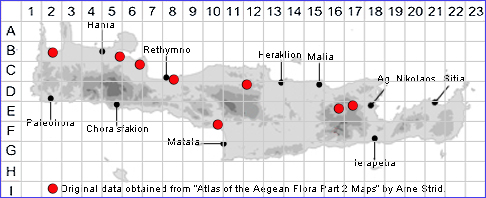SPECIES DESCRIPTION
TRIFOLIUM SPUMOSUM
Family and Genus:- See- LEGUMINOSAE/Sect. MISTYLLUS
Common Names:- Bladder trefoil
Homotypic Synonyms:- Amoria spumosa, Mistyllus spumosus.
Meaning:- Trifolium (L) With three leaflets.
Spumosum (L) With a frothy or foamy appearance.
General description:- Glabrous annual.
Stems:-
1) 10-30(-50) cm. usually branched from the base, ascending, rather robust.
Leaves:-
1) Leaflets, 10-20(-30) mm, broadly obovate-cuneate, thin, not strongly veined,
denticulate.
2) Stipules, membranous, whitish, free part ovate, acuminate.
Flowers:-
1) Heads, dense, globose, 15-20 mm at anthesis, 25-30 mm, in fruit.
2) Peduncles, shorter than or equalling the subtending leaf.
3) Bracts, rather large, scarious.
4) Calyx tube, scarious, pyriform, somewhat inflated already at anthesis;
a) teeth, subulate, shorter than the tube.
5) Fruiting calyx, strongly inflated, glabrous, with 20 pinkish longitudinal veins often
connected by thinner transverse veins.
6) Corolla, much longer than calyx, pinkish-purple.
Fruit:-
1) Legume, 3- to 4-seeded.
Key features:-
1) Fruiting calyx, glabrous, inflated ± equally on all sides.
2) Bracts, prominent, glumaceous, striate, shorter than the fruiting calyx-tube.
3) Heads, pseudoterminal.
4) Leaflets, broadly obovate-cuneate.
5) Corolla, slightly exceeding the calyx.
Habitat:- Damp grassland, coastal habitats, seasonally wet spots in phrygana,
olive groves and field margins. 0-850 m.
Distribution:- Widespread throughout the Mediterranean region and SW Asia to W
Syria and Iran. Rare on Crete with limited distribution.
Flowering time:- Mar-June.
Photos by:- Dr. Armin Jagel

